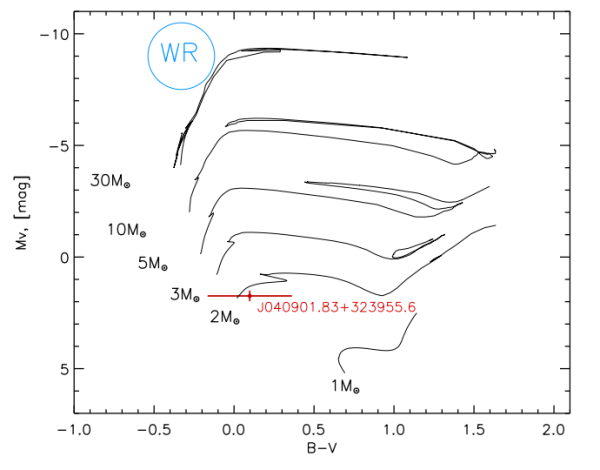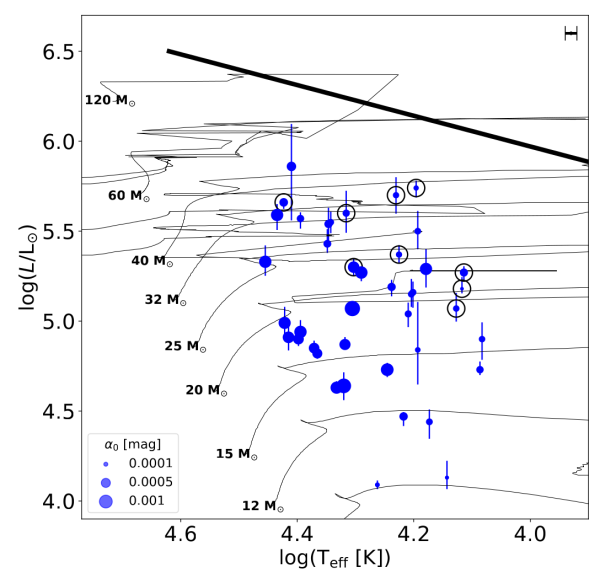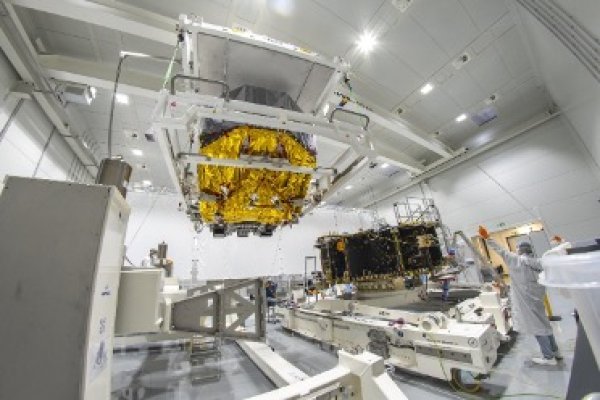There are several types among the stars, which quite naturally represent a touch of exoticis. These include, without doubt, Wolf-Rayet stars, evolved massive stars that have lost their hydrogen envelopes. But all that glitters is not gold, and Olga Maryeva of ASU’s Stellar Depatrment and her colleagues are showing that some much more ordinary stars can masquerade as Wolf-Rayet stars. And some very successfully.
Abstract: The similarity in physical conditions in winds of low-mass post-asymptotic giant branch stars and evolved massive stars leads to the appearance of an interesting phenomenon of spectral mimicry. Due to that the discovery of every new star with Wolf-Rayet spectrum requires special study of its evolutionary status before it may be included in the list of Galactic Wolf-Rayet (WR) stars. A couple of years ago LAMOST J040901.83+323955.6 (hereafter J0409+3239) was selected as a WR star in LAMOST spectroscopic database by machine learning methods. In this work we investigated its evolutionary status. Analyzing the spatial location of J0409+3239, in the Galaxy and its position in the color-magnitude diagram we concluded what J0409+3239, is instead a low mass object with WR phenomenon. Its luminosity is L∗=1000L⊙ and effective temperature Teff=40,000 K. Using new and archival photometric data we detected irregular variability on time scales from hours to tens of days with amplitude up to ≈0.2 mag. Comparison of the spectrum obtained in 2022 with the one from 2014 also shows an evidence of spectral variability. The absence of clearly detected circumstellar nebula does not allow to classify J0409+3239, as [WR], i.e. a central star of planetary nebula (CSPN). However, its position in Hertzsprung-Russell diagram suggests that J0409+3239, is a low mass star caught in rare transitional phase to CSPN. Estimation of J0409+3239, mass based on evolutionary tracks shows that it is less than 0.9 M⊙, and thus the age of the Galaxy is barely enough for the star to evolve to its current stage.
Image caption
Position of J0409+3239 in the color–magnitude diagram. Solid black lines show Geneva evolutionary tracks (Ekström et al. 2012) for solar metallicity and initial rotational velocity 40 per cent of breakup. Position of WR stars is showed schematically.
More informations
- Popular article: Na čem pracujeme: LAMOST J040901.83+329355.6 – Wolfova-Rayetova hvězda, která není Wolfovou-Rayetovou hvězdou, M. Švanda (ASU web page, in Czech)
- Scientific paper: O. Maryeva et al., LAMOST J040901.83+329355.6 – a new Galactic star with Wolf-Rayet characteristics in the transitional stage from post-asymptotic giant branch to central star of a planetary nebula, Monthly Notices of the Royal Astronomical Society 527 (2024) 11925-11934, preprint arXiv:2312.15854
- Contact: Dr. Olga Maryeva, olga.maryeva@asu.cas.cz



